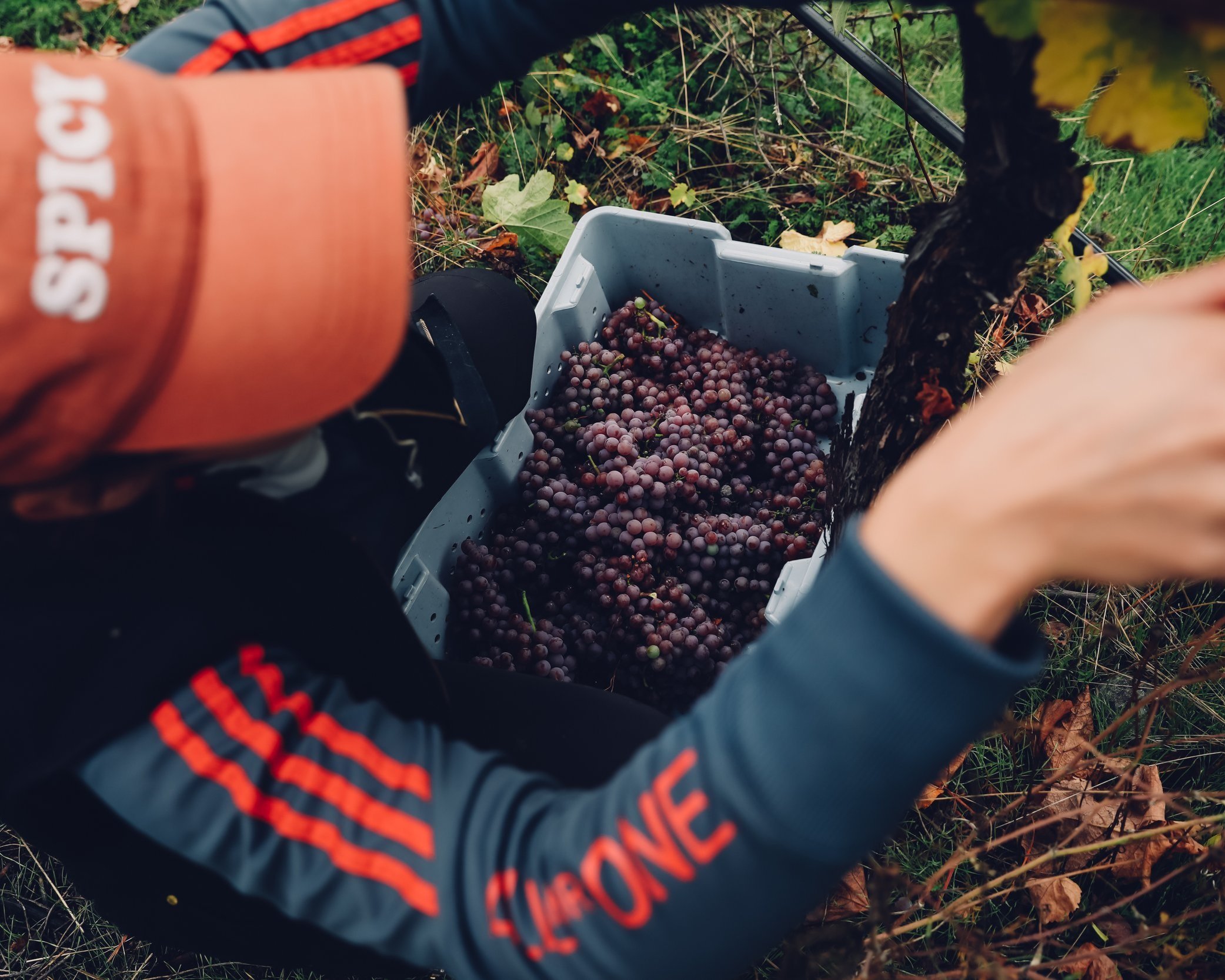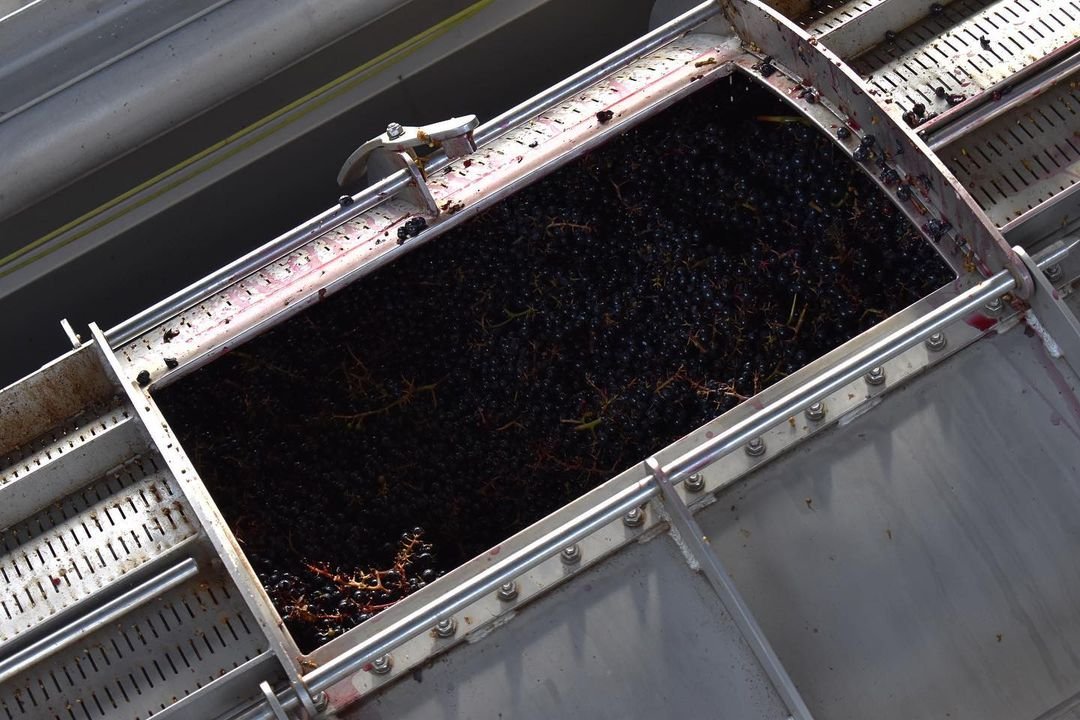“NOT FOR THE FAINT OF HEART: A POWERFUL, INTENSE BLEND, FULL OF BRIGHT FRUIT FLAVOUR, BALANCED WITH A DRIED-FLOWER SAVOURINESS. THIS NOT-SO-LITTLE NUMBER WILL ENTICE YOU TOWARDS ANOTHER BITE OF FOOD, ANOTHER SIP OF WINE, REPEAT.”
THAT IS JOUE ROSÉ.
YES, YOU WENT THERE. YOU JUST SCANNED A QR CODE ON A WINE BOTTLE, AND ARE WELL ON YOUR WAY TO BECOMING A TOTAL NERD.
ONE OF US… ONE OF US…
IN A NUTSHELL:
The 2020 vintage consisted of a cooler early-summer, followed by a warm, dry late-summer and autumn. The fruit for the Joue Rosé is estate-grown, using permaculture and dry-farming, on glacially deposited stone and gravel soils.
Whole-berries of Gewürztraminer and Pinot Gris were added on top of pressed red juice of Marechal Foch and Pinot Noir. It fermented like this, punched down about once daily, then pressed-off, and left in tank on primary lees until bottling. No yeast, nutrients, enzymes, or sulphites added; unfiltered and unfined.

VITICULTURE
The Gewürztraminer is located in “B-Block” region of the vineyard, which hosts some of our oldest vines, located higher in elevation and on steeper slopes. The soil in this area is excellent: a perfect mix of glacier alluvial deposits that are rich organic material. The vines are spaced further apart to allow for more production from each individual vine. This also helps to create a balance between fruit production and vigour or vegetative growth, producing flavourful, small grape berries.
Our hybrid varietals, including Marechal Foch, are located in “F Block” in the vineyard. Generally there is more humidity where our hybrids are grown, due to proximity to Averill Creek; or they’re grown in shaded areas, sheltered from the wind. This is appropriate positioning since hybrids are especially disease resistant—which can result from humidity—and are early-ripening—which means that cooler conditions will still allow for ripening in our region.
WINEMAKING
The black varieties (Pinot Noir and Marechal Foch) were pressed-off, leaving red juice. Gewurztraminer and Pinot Gris were then de-stemmed, leaving whole berries, which were added on top of the red juice. The result was a red juice with a cap of whole white berries.
It was treated similar to a red wine ferment, being punched down about once daily, then pressed-off of the skins, blended and left in tank on primary lees until bottling.
No yeast, nutrients, enzymes, or sulphites have been added. The wine is also unfiltered and unfined.
SPECIFICATIONS
- pH: 3.0
- Titratable Acid: 7.7g/L
- Free Sulphur: 0ppm
- Alcohol: 12.5%
- Residual Sugar: <2g/L
- Malolactic Fermentation: 100%
- Production: 350 cases

SUBSCRIBE TO OUR MAILING LIST.
Sign up with your email address to receive offers and updates.